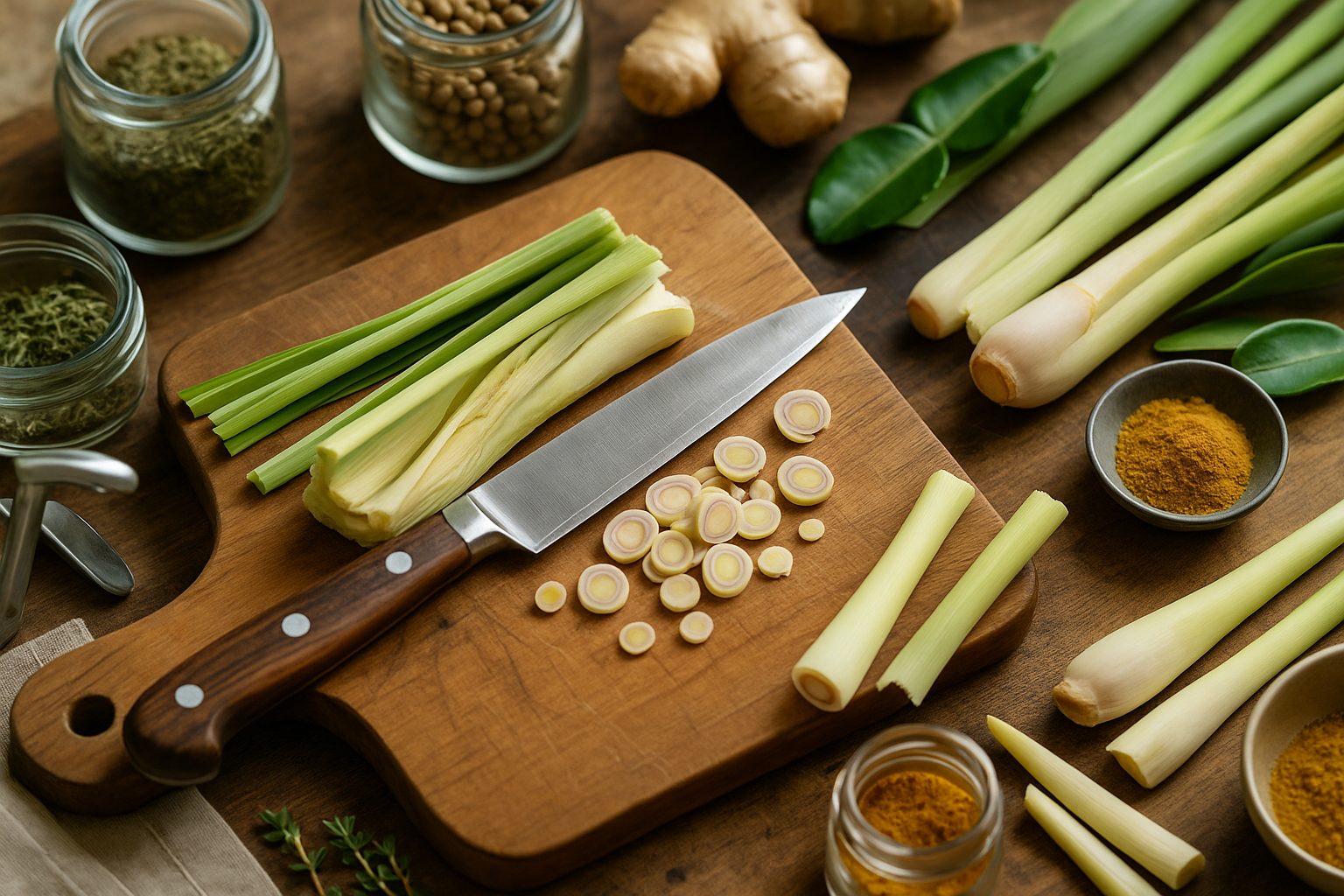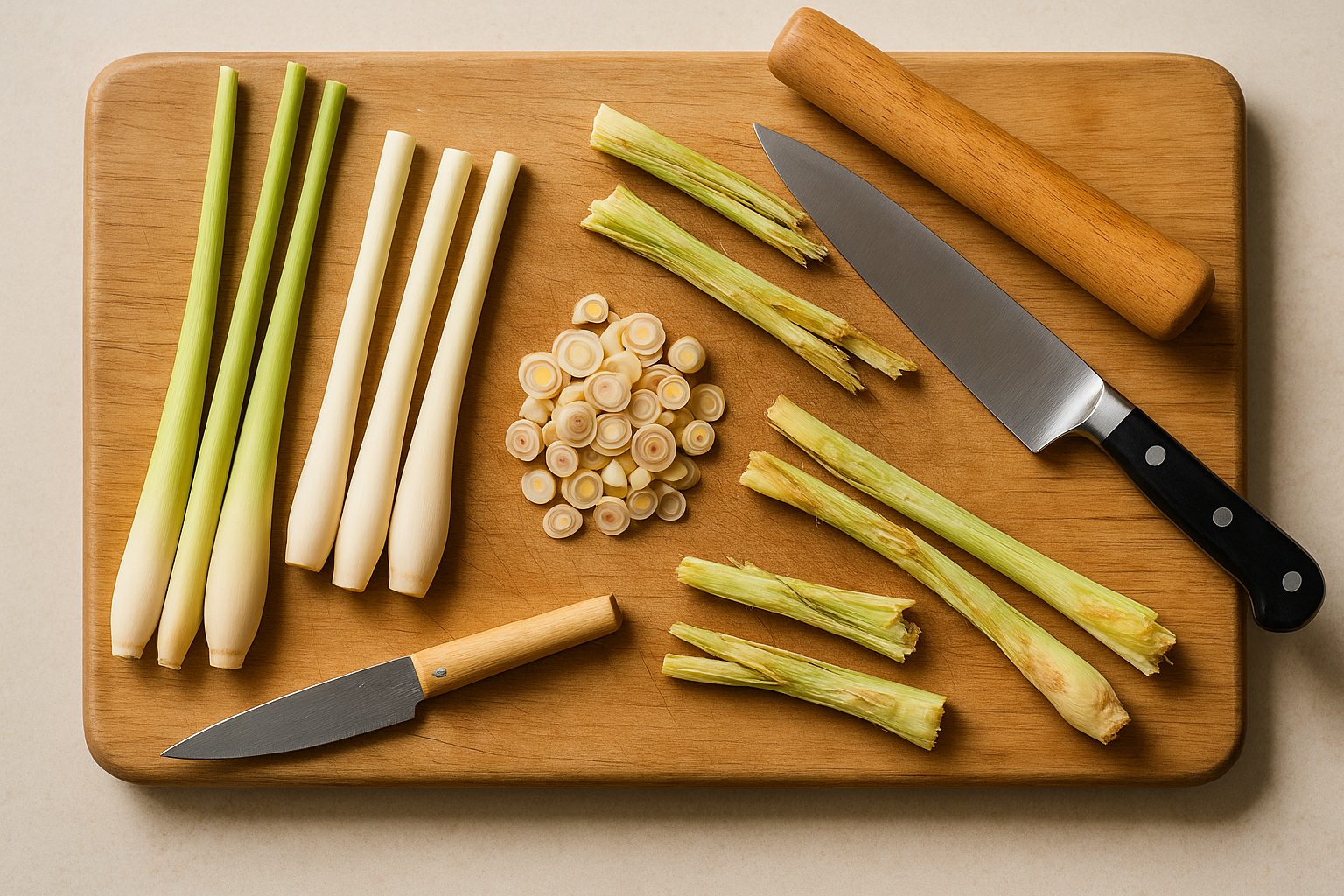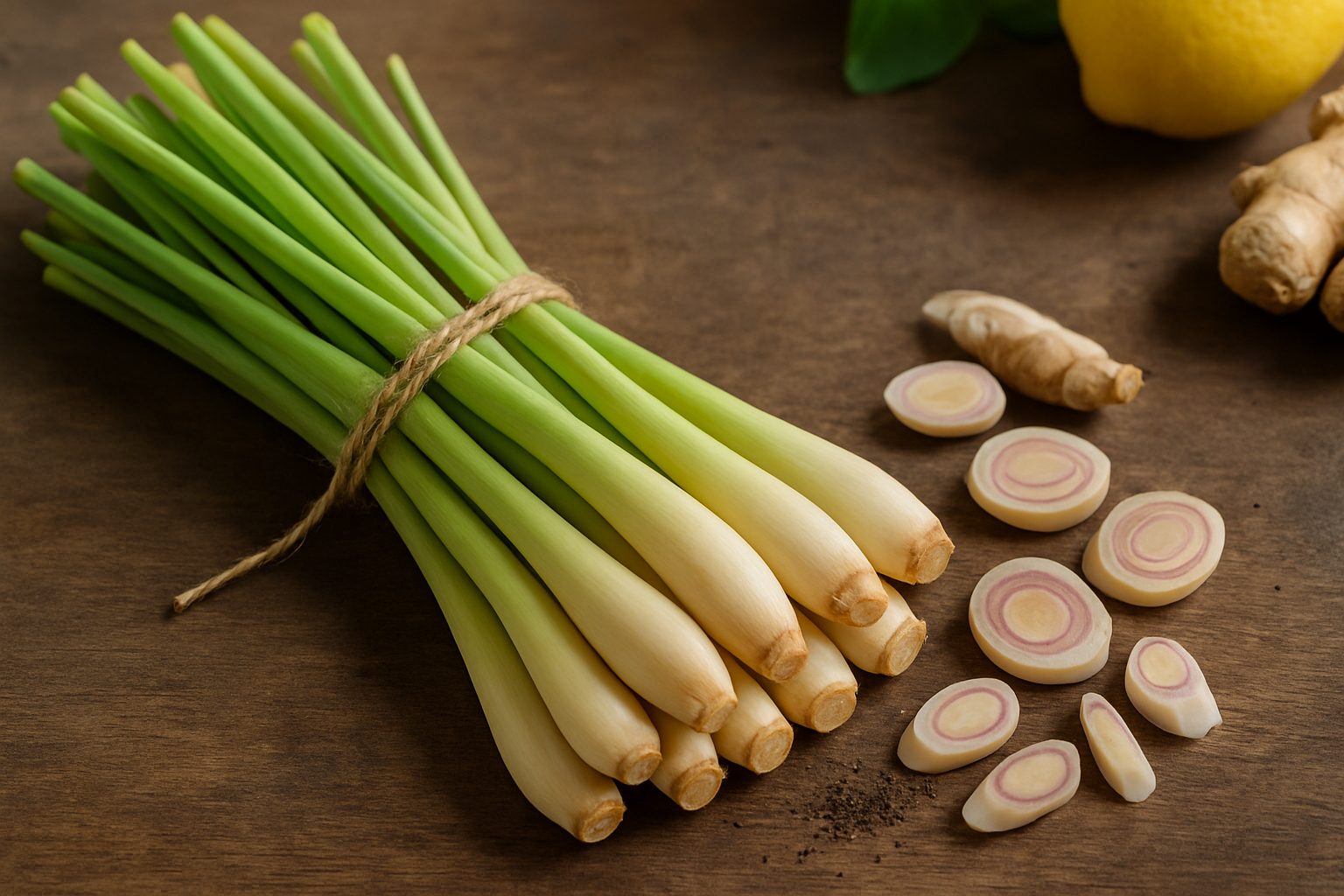What is Lemongrass and What Does It Taste Like?

Cooking with lemongrass opens up a world of bright, fragrant flavors that can instantly elevate everyday dishes. If you haven’t encountered this tall, reed-like herb before, you’ll find it adds a citrusy, lemony twist along with subtle herbal and slightly sweet notes—far from the sharp tartness of regular lemons. Lemongrass (Cymbopogon citratus) is a tropical grass native to Southeast Asia, where it thrives in warm, sunny climates and grows in tall, fragrant clumps. While its tough, fibrous stalks might not look edible at first glance, the pale, tender core is packed with essential oils and flavor compounds prized in kitchens and traditional medicine.
In cooking, lemongrass is a signature ingredient in Thai, Vietnamese, Indonesian, and Cambodian recipes, infusing soups, curries, and marinades with its unmistakable, zesty aroma. Famous dishes like Tom Yum soup, Thai green curry, and Vietnamese lemongrass chicken owe much of their vibrant complexity to this humble herb. Beyond Asia, chefs around the globe are now using lemongrass in everything from cocktails and teas to desserts, bringing a refreshing twist to their creations. Its fresh aroma—often likened to a cross between lemon zest and fresh ginger—works just as beautifully in marinades as it does in herbal infusions or salad dressings.
Lemongrass isn’t just about flavor; it comes with a suite of nutritional and medicinal benefits. Rich in antioxidants, lemongrass has been used for centuries in traditional remedies to reduce inflammation, aid digestion, and even support the immune system. Modern studies highlight its antibacterial and antifungal properties, as well as the calming effects of its essential oils, which are often used in aromatherapy. Whether you’re a home cook looking to brighten up your next meal or simply curious about global flavors, cooking with lemongrass offers a fresh, flavorful, and healthy adventure for any kitchen.
Where to Buy and How to Choose Lemongrass
Finding lemongrass is easier than you might think, whether you live in the city or a smaller town. Most large grocery stores now stock fresh lemongrass in the produce aisles, often alongside other herbs. Asian markets are a reliable treasure trove, usually offering lemongrass in bundles that are fresher and sometimes more affordable.
If those options aren’t nearby, online retailers like Amazon, Asian grocers’ websites, and specialty food shops deliver both fresh and alternative forms straight to your door.
Choosing Fresh Lemongrass
When selecting fresh lemongrass, look for stalks that are bright green near the base, fading to pale yellow at the tops. The stalks should feel firm, not dry or chalky. When you scratch the surface with your fingernail, you’ll release a citrusy, clean aroma—a sure sign of freshness.
Alternatives to Fresh Lemongrass
If you can’t find fresh lemongrass, don’t worry—there are plenty of convenient options:
- Dried lemongrass: A great pantry staple for simmering in soups or curries. Just remember to strain it out before serving, as it can be tough.
- Lemongrass paste: Perfect for marinades and salad dressings, this paste gives a quick flavor boost with minimal prep.
- Frozen lemongrass: Available at some Asian markets and online, frozen lemongrass works well in most cooked dishes and retains much of the original fragrance.
DIY Substitutes
In a pinch, you can mimic lemongrass’s unique citrusy notes by combining lemon zest with a bit of ginger or by using lemon balm or kaffir lime leaves if you have them. They won’t be quite the same but will evoke that fresh, aromatic brightness. Experiment with these options to see which flavors work best for your favorite recipes.
Understanding Edible Parts and Preparation Techniques

When using lemongrass in your cooking, it’s essential to separate the tender, edible portions from the tough outer layers. The pale lower section of the stalk—about the bottom 4 to 6 inches—is where all the flavor lies. This is the part you want to use.
Begin by trimming off the root end with a sharp knife, being careful to keep your fingers away from the blade. Next, peel away the dry, fibrous outer layers until you reach the soft, light-colored core. The green tops and outer sheaths are generally too woody to eat but can be reserved for flavoring stocks or teas, then discarded before serving.
For most recipes, you’ll slice the stalk thinly crosswise if you plan to eat it, or cut it into larger chunks for steeping in soups or curries—just remember to remove them before eating. To maximize lemongrass’s unique citrusy flavor, it helps to bruise or crush the stalk using the flat side of a knife or a rolling pin before slicing; this releases the essential oils.
Always use a stable cutting board and keep your knife sharp to prevent slips—lemongrass can be tough on dull blades, which increases the risk of injury. Alternatively, a food processor can help when preparing larger quantities.
With these simple techniques, you’ll draw out the best flavor from lemongrass and safely prepare it for any dish.
How to Cook With Lemongrass
Cooking with lemongrass adds a fresh, citrusy brightness that shines in many Asian cuisines. Experimenting with different methods can help you unlock its full potential.
One of the most common ways to use lemongrass is by infusing broths and liquids: simply bruise a stalk by giving it a gentle whack with the back of a knife, then simmer it in soups like Thai tom yum or Vietnamese pho for a subtle lemony aroma.
For curries, stews, or marinades, try finely chopping the tender inner stalk or pounding it with a mortar and pestle to release its essential oils. This pasty mixture blends beautifully with ingredients like garlic, ginger, chili, and coconut milk, making it the backbone of beloved dishes such as Thai green curry and Indonesian satay marinades.
Lemongrass also pairs well with seafood, chicken, and tofu, especially when combined with zesty lime leaves or mild, nutty peanuts.
Using the Right Quantity
Remember that lemongrass’s flavor can range from delicate to bold:
- In mild dishes or when serving those new to its taste, start with half a stalk per recipe and increase as needed, tasting as you go.
- For spicy or heavily seasoned dishes, don’t be afraid to double up or even use it in both the marinade and the sauce for layered depth.
Preparation Tips
- Always remove tough, woody pieces before serving—especially from soups.
- Consider finely slicing or food-processing your lemongrass for smoother pastes.
With these tips, you’ll soon find lemongrass as versatile and indispensable as salt or pepper in your kitchen.
Proper Storage to Keep Lemongrass Fresh
To keep lemongrass fresh and flavorful, it’s important to store it correctly based on its form.
For fresh lemongrass stalks, trim any brown ends and wrap the unwashed stalks tightly in a damp paper towel. Then, place them inside a resealable plastic bag in the crisper drawer of your refrigerator—this keeps them crisp for up to two to three weeks.
If you have more lemongrass than you’ll use soon, chop it into pieces or slices and freeze them in an airtight container or freezer bag, ideally portioned out for convenient use. Frozen lemongrass can last up to six months and retains most of its aroma and flavor.
Dried lemongrass should be stored in an airtight jar in a cool, dark pantry, where it can last for up to a year—just be sure it stays dry, as any exposure to moisture can lead to mold.
Always check for common spoilage signs before use:
- Fresh lemongrass becomes slimy or develops a strong, sour odor.
- Dried or frozen lemongrass turns discolored or molds if compromised.
To avoid moisture and mold, make sure containers and bags are sealed tightly and don’t wash lemongrass until you are about to use it.
By following these simple storage tips, you can keep lemongrass ready for your next stir-fry, curry, or cup of herbal tea without worry.
Lemongrass in Everyday Cooking: Quick Uses and Simple Recipes
Lemongrass is a surprisingly versatile ingredient that you can weave into your daily meals, lending its refreshing citrus notes to everything from drinks to dinner. An easy first step is brewing a simple lemongrass tea—just bruise a stalk, slice it, and steep it in hot water for a fragrant cup. You can optionally add ginger or honey for extra depth.
For a quick soup, add a few smashed stalks (even the tough outer layers work) to chicken or vegetable broth along with garlic and a squeeze of lime. Let the flavors infuse for 10-15 minutes before straining and finishing with fresh herbs.
If you love stir-fries, try slicing tender lemongrass bulbs thinly and sautéing them with garlic and chili as a flavorful base. This pairs well with veggies, chicken, shrimp, or tofu.
Get creative by tossing finely minced lemongrass into salad dressings, marinades, or even sprinkling a little onto grilled vegetables for an unexpected zesty lift. Don’t be afraid to taste as you cook—the strength of lemongrass can vary, so start small and adjust until you find your ideal level of citrusy brightness.
Lemongrass isn’t just for Thai curry or Vietnamese pho; its clean, aromatic flavor can complement everything from roasted potatoes to cocktails. Take it as an invitation to experiment:
- Try infusing lemongrass into oil for drizzling over fish.
- Blend it into a fruit smoothie.
- Make a quick lemongrass syrup for homemade lemonade.
With a bit of curiosity, you’ll soon find lemongrass is right at home in your everyday kitchen, transforming simple dishes into something memorable and irresistibly fresh.
Frequently Asked Questions About Lemongrass
Lemongrass is entirely edible, but its tough, fibrous stalks are rarely eaten raw. Most people use only the tender inner bulb, sliced thin, in salads or as a garnish. For cooking, bruising or chopping the stalk helps release its citrusy flavor, and you can remove the pieces before serving if the texture is too coarse.
If you need a substitute, try using lemon zest and a bit of fresh ginger—this combination mimics the bright, spicy notes of lemongrass in curries, soups, or teas.
While lemongrass is generally safe, pregnant or breastfeeding individuals, as well as those with allergies, should consult a doctor before consuming large amounts, as it may cause adverse reactions in rare cases.
Remember to always wash lemongrass thoroughly, remove tough outer layers, and use the freshest stalks possible for the best results. For storage, keep fresh lemongrass in the fridge wrapped in a damp paper towel, or freeze chopped portions for easy access.
Whether you’re infusing broths, marinating meats, or brewing tea, start with a modest amount and adjust to taste—the bold flavor of lemongrass can quickly become overpowering for sensitive palates.
